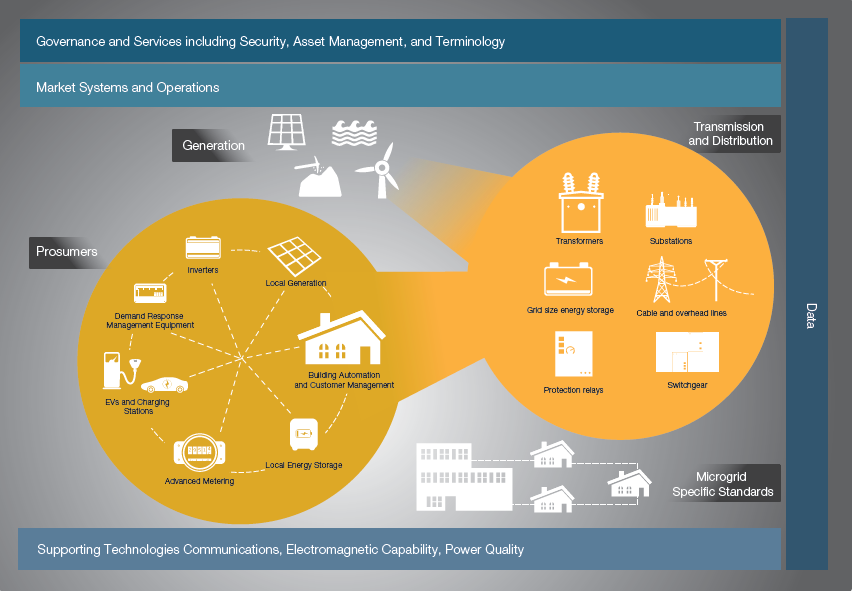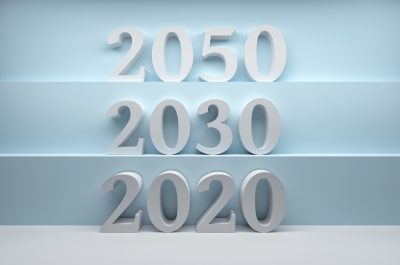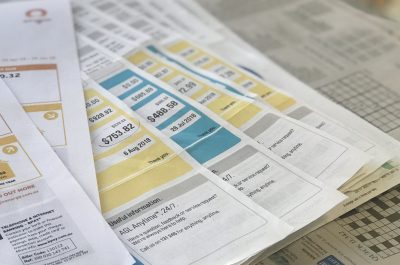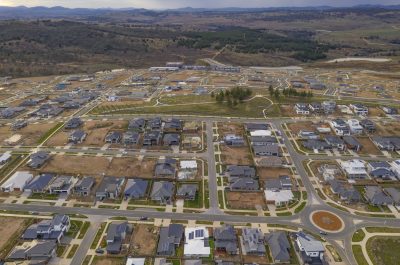Standards to unlock Australia’s distributed electricity future
Australia’s energy systems are undergoing extensive change driven by the uptake of new technologies and consumer preferences that are encouraging innovation and adaptation of existing infrastructure to support new demands and directions.
These drivers indicate that Australia’s energy future will become massively distributed, yet increasingly interconnected. Residential and commercial customers are expected to install at least three times the current amount of Solar PV capacity in the next 20 years[1] and Australia is recognised as a potential global hotspot for battery storage.
The US Department of Energy recently estimated that while about 30% of US electricity flows through power electronics today, by 2030 the proportion will reach 80%.[2] The grid will need to be smarter and more actively managed to enable customers to connect and benefit from distributed resources. The ‘digitisation’ of the grid will require advanced analytics, connectivity and cybersecurity. For instance, it has been estimated that smart meter systems alone increase energy consumption and other service data by more than 10,000 times.[3]
Most fundamentally, Australia is moving towards a market driven energy future where customers have increased choice and control. No vertically integrated utility will pick the technologies that the consumers can use. No regulation will prescribe the communications device. Australian consumers will rely on vibrant service competition, enabled by an orchestrated grid platform and an effective Standards framework.
Standards and the Future of Distributed Electricity – Discussion Paper
The current suite of Australian Standards must be updated to leverage the full value of distributed energy resources and empower customers, and to minimise risks to customers and power system security.
Standards Australia and the Energy Networks Association are co-resourcing development of a high-level roadmap – a defined pathway and timeframes for developing and updating of relevant Australian Standards[4] – as part of the wider Electricity Network Transformation Roadmap project.
The topics and technologies proposed to be covered are outlined in Figure 2 below, and include:
- distributed generation;
- grid-side and local energy storage;
- distributed energy coordination;
- customer energy management systems;
- electric vehicles;
- terminology and vocabulary;
- design, planning and performance;
- location and installation;
- inverters;
- supporting technologies; and
- data frameworks, cyber security and privacy.
Figure 2: Standards and the Future of Distributed Electricity in Australia

Standards Australia has released a discussion paper for consultation, Standards and the Future of Distributed Electricity.
The key objectives of the project are to:
- Provide a snapshot of the current state of Australian standardisation in the sector, identifying the relevance and currency of existing suites of standards, as well as future needs, and where the development of Australian standards or participation in international committees is lacking.
- Identify urgent priorities
- Identify needs for further coordination, given the interrelated nature of the issues and work currently underway by Standards Australia.
- Identify timeframes for standards development priorities, to assist the development of fit for purpose standards in a timely way.
The optimal use of distributed resources across a complex two-way operating system depends on the interaction between different services and systems. The most effective use of distributed resources therefore requires communication between the different component systems. Interoperability and the ability of the component systems to communicate will be key for a future, efficient energy system.
One challenge facing vendors and utilities is determining the standards to be used as the foundation for the future grid. There may be a range of options, as highlighted in the communications example below.
Case Study – Communications and Interoperability
Communication technology providers often use proprietary management protocols. If a network of the future develops with three or four communications technologies in its smart grid, it may end up with three or four management systems that are not able to talk to each other[5].
Energy networks, over the next few years, are likely to require, or will enable, communications infrastructure that will need to gather information in near real-time and in intervals. In many cases, the format of information – and often the media and protocols on which it is carried – will be different and the communications environment will be highly heterogeneous. As smart solutions are developed, there will be a need for information captured to be shared between service delivery channels. The information will need to be normalised (and perhaps translated), classified and stored[6].
Communication protocols will need to be established for new technologies and field devices with many functional capabilities, and for their interfaces with the network and control systems – there will be a need for Distributed Energy Resource (DER) Management Systems, or DERMS. Some international standards have already been produced in this area, but work needs to be undertaken in an Australian context to address DMS integration of DER, including utility-to-aggregator interfaces and substation or feeder-level management.
As identified in Figure 2 below[7], it is likely that any message/communication standards developed for DERMS should be ‘open’ or ‘agnostic’ to architecture, as the DERMS could be hosted in the cloud, managed by a third party aggregator or by the utility. The DERMS may see the business logic and decision making achieved at a distributed level in the grid, through communications with the appropriate protocol to devices in the field, like smart meters or inverters.
Figure 2: Architecture alternatives reflecting different ways a DERMS could be deployed – at the utility, in the cloud, or in a substation (From Gerald et al, 2015)

Security and Efficiency
The ever increasing reliance on information sharing and communication technology in the future grid will require careful management of risks to consumer privacy and cyber security. These issues will need to be comprehensively addressed in future network design and energy supply chain management. However, standards will also play a key role in ensuring these requirements are addressed.
While standards can play a critical role in enabling new market activity, and ensuring safety, reliability and security, caution will be required in the creation and adoption of standards to avoid unintended impacts. They should be carefully developed and managed to avoid excessive restriction or challenges to interoperability and innovation. The consensus-based approach employed by Standards Australia is likely to be a key capability in achieving this balance.
More information
Standards Australia has released a discussion paper for consultation, Standards and the Future of Distributed Electricity.
Feedback on the discussion paper is encouraged by Monday, 7 August 2016, with the prioritised work plan expected to be published by the end of 2016.
[1] See for instance, Solar PV projections to 2035-36 in AEMO’s 2016 National Electricity Forecasting Report, p.28
[2] DOE Office of Electricity Delivery and Energy Reliability, Power Electronics Research and Development Program Plan, April 2011.
[3] De Martini, Paul, (2012) The Future of US Electric Distribution, EEI.
[4] Standards and the Future of Distributed Electricity – Discussion Paper, Standards Australia (NSM@standards.org.au) 11 July 2016
[5] V. Vyatkin; G. Zhabelova; N Higgins; M. Ulieru; K. Schwarz and N-K C. Nair. 2010. Standards-enabled Smart Grid for the future Energy Web; Innovative Smart Grid Technologies.
[6] G. R. Gray, J. Simmins, and B. Seal. 2015. From Research to Action | Advancing the Integrated Grid: Distributed Energy Resource Management Systems (DERMS); Electric Energy T&D, May/June.
[7] Integrating Smart Distributed Energy Resources with Distribution Management Systems. EPRI: Palo, Alto, CA. 2012. 1024360.


